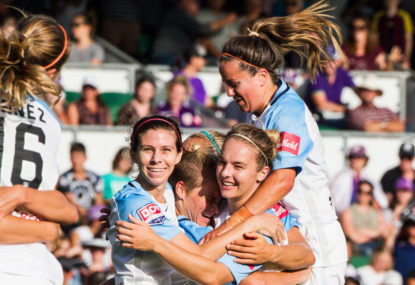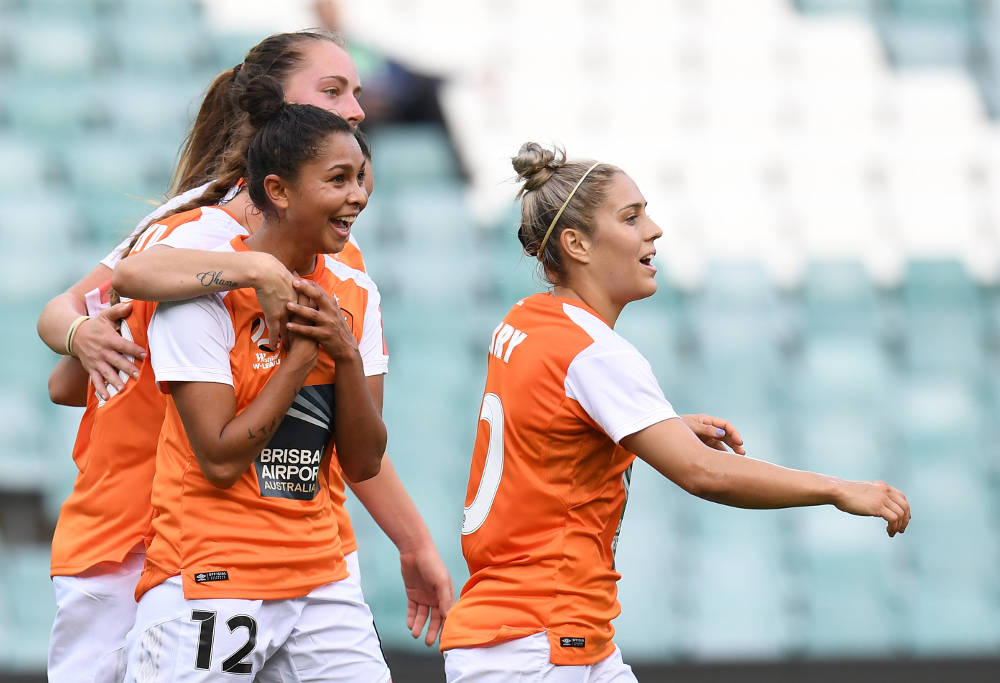Controversy as Villa keeper handed second yellow for shootout crowd taunting... but isn't sent off
Emi Martinez was saved by a new rule that resets yellow cards at the end of extra time, meaning his second yellow for taunting…

This isn’t just another expansion article; this time it’s specific to the W-League and the expansion part is already handled. Instead this article looks at how to structure up a ten-team league in a short summer window.
In an ideal world a ten-team competition would play 18 games – probably over 21 rounds to allow for byes and international breaks – but the USA domestic league, the NWSL, finishing in early October limits moving the season earlier in the year and the FA Women’s Super League starts the end of January, which means pushing the W-League season later is also problematic.
Clashes with overseas competitions aren’t relevant just because expanding into their playing windows would hinder the W-League getting international players to come to Australia; a clash would also limit Australian players from being able to go overseas to these and other leagues.
Last season saw Lydia Williams (Melbourne City and Houston Dash), Steph Catley and Allana Kennedy (Melbourne City and Orlando Pride), Laura Alleway (Melbourne Victory and Orlando Pride), Hayley Raso (Brisbane Roar and Portland), Ash Sykes (Canberra United and Portland), Larissa Crummer (Melbourne City Seattle) and Sam Kerr (Perth Glory and Sky Blue FC) all playing in the USA.
That list doesn’t include the various internationals playing in the NWSL who have also played W-League, which includes Stephanie Ochs, Natasha Dowie, Abby Dahlkemper, Jasymne Spencer and Jess Fishlock, to name a few.
It is in no way an exhaustive list, as it doesn’t include players from other leagues, like Yukari Kinga (Melbourne City), but it illustrates my point – the W-League would be poorer if they didn’t have these players available for large chunks of the season.

(AAP Image/Dean Lewins)
On the other hand, it would be a shame to tell young Australian players they have to decide between playing for W-League and having a crack at an international club.
So how could Australia handle expanding the league, especially with Central Coast Mariners a strong possibility of joining as early as next season? My simple solution is to split the competition into two conferences. Everyone can play each other once, with a second match taking place between teams within their conferences.
The two conferences would be based on geography. Brisbane Roar, Melbourne City, Melbourne Victory, Adelaide United and Perth Glory would be grouped together and Canberra United, Sydney FC, Western Sydney Wanderers, Central Coast and Newcastle would be grouped together.
How would you work out the difficulty curve of the two brackets? Simple: you don’t. Everyone plays each other once, and if your bracket is more difficult than the other, tough. It is no different to the pseudo-random generation of the fixture of any other league, which are based on the previous season’s form and guesswork to make it balanced. Who would have predicated Melbourne City would fall away this season?
However, there is a clear advantage for the New South Wales teams. They don’t have to fly anywhere near as much I hear people complaining. Yes, they don’t – but get over it. In a normal fixture this would happen anyway. Making the competition financially viable, meaning teams don’t have to fly so often and can catch a bus from Canberra to Newcastle, Central Coast or across town, is a better option than sending everyone on planes every second week. The other teams have to do it anyway when they play in New South Wales.

(AAP Image/Tony McDonough)
The only sticking point I’m sturggling with is the odd number of games, with eight intra-conference and five inter-conference matches. How could we decide who gets the extra home games, especially with the travel advantage?
This can be resolved by having each fixture on a two-year cycle, where five of the ten teams have the extra home game in Season 1 and the other getting it in Season 2. The home-and-away rotation of the inter-conference games would also then rotate accordingly. The fixture would be set so that one of the two Melbourne and Sydney teams are always doubled-up to ensure a set amount of games in the capitals.
Finals would work in a similar fashion, with the top four retained. First past the post across both competition conferences would be named the premiership winners. However, seeding for the finals would be based on their respective conferences to balance difficulty.
Therefore P1 of Conference A would play P2 of Conference B and P1 in Conference B would host P2 in Conference A in a straight elimination final. The higher ranked team overall would decide home finals for the grand final.
You may ask why I have come up with a solution to a problem that doesn’t really exist yet. The W-League will expand eventually, but its place in world football also needs to be considered.
Keeping the season condensed allows players to play overseas and in Australia. Having the Australian women playing overseas ultimately strengthens their game, which in turn strengthens the league. The Matildas are a realistic chance of winning the World Cup, and a strong domestic is a foundation for more success.